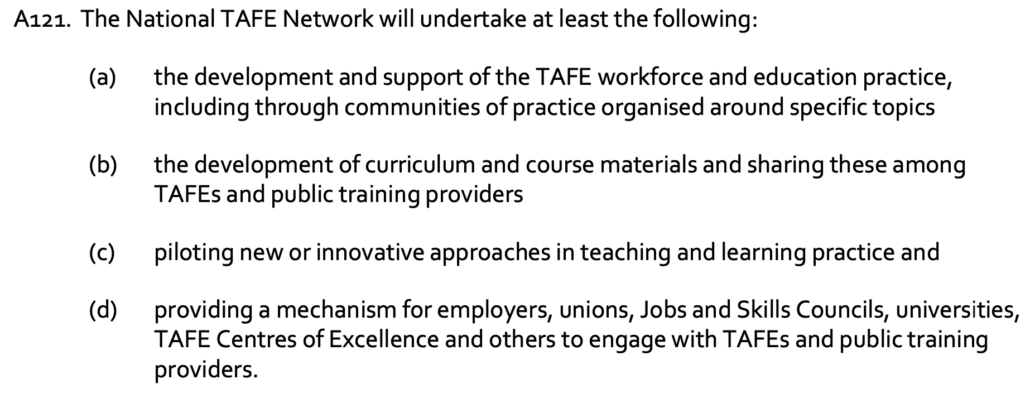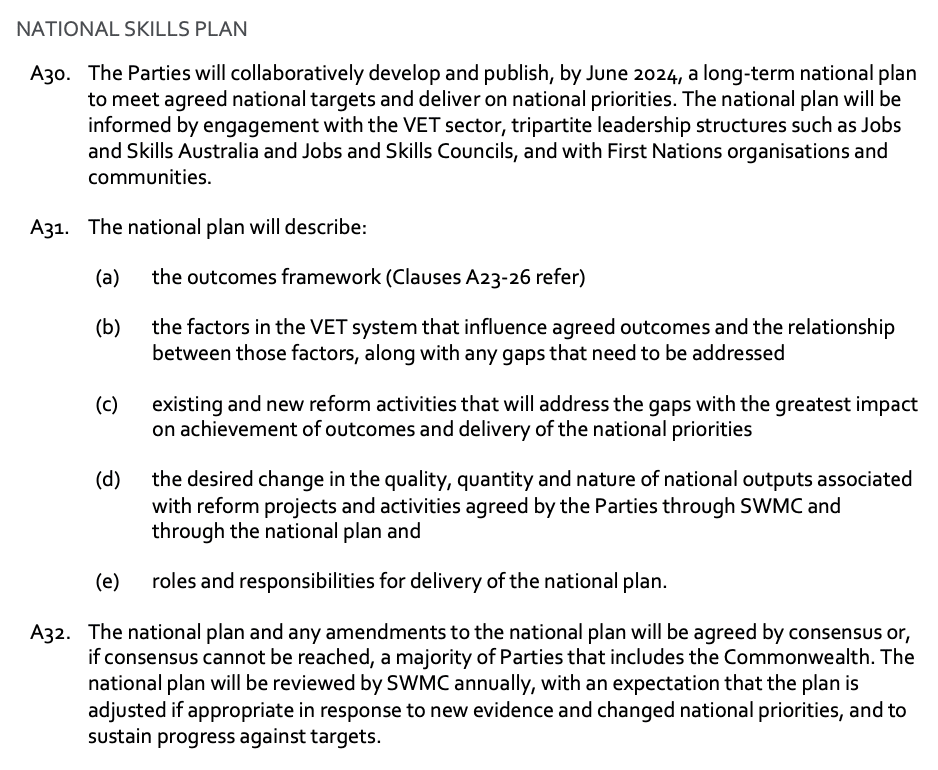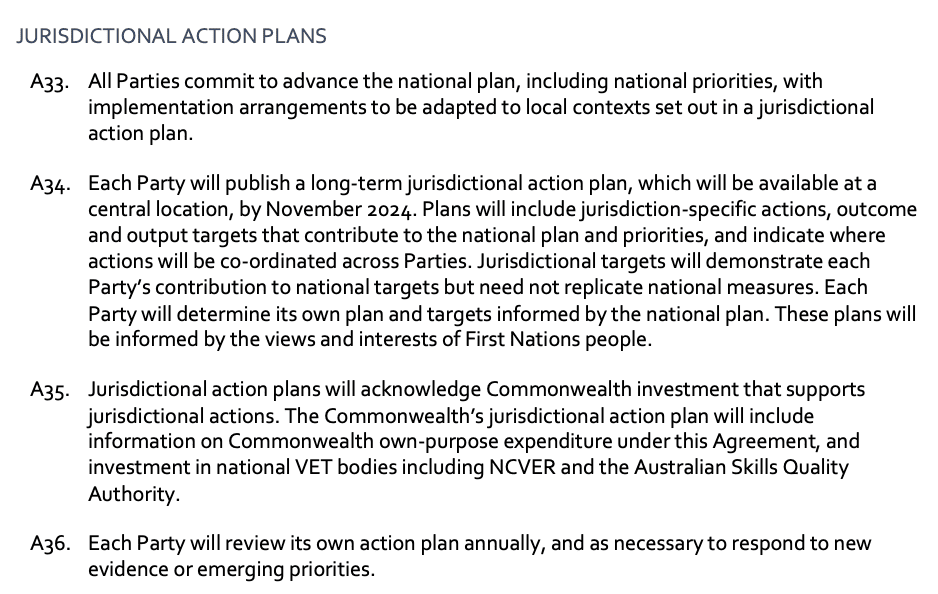
There’s MUCH more detail yet to come in the National Skills Agreement…
Finally we have a new National Skills Agreement – signed off by the Prime Minister, Premiers and Chief Ministers last week.
Prior to the agreement being struck I had been wondering if governments were having trouble finalising things and whether the agreement might be delayed until mid-year, after all in just the last few weeks there were joint announcements from the Australian government and the governments of Western Australia and South Australia specifically celebrating more government funding for Fee Free TAFE places commencing 1 January 2024.
I had been pondering if that meant the new Agreement was quite some time away from being finalised and would start mid-year.
That assumption was wrong – or at least ‘sort of wrong’. The new agreement will in fact start from 1 January 2024 and while it is much more detailed and prescriptive than previous agreements, there is still significantly more important detail yet to come (and we can expect it from mid-2024!).
For the first time in the history of VET funding agreements between the Commonwealth, States and Territories – this National Skills Agreement will be accompanied by a detailed National Plan for the VET sector and then individual annual jurisdictional plans which will sit underneath the National Plan.
And all of those plans are still to be agreed – but the hope is that the National Plan will be finalised by June 2024.
What was agreed?
Even without those plans, the agreement includes more money for Fee Free TAFE (and other VET) places and for some of the new initiatives in the agreement – but we do not know yet what changes there will be to the funding different governments provide for different VET qualifications.
Remember one of the stumbling blocks in getting this agreement signed off was the former government’s interest in nationally consistent funding levels and the current Australian government has signalled it also wants more consistency albeit under a ‘shared national stewardship’ approach (to work out the consistent funding levels).
So for now the most difficult component of the Agreement is still to be finalised (and will be dealt with in the accompanying plans). Changes to funding levels for different courses will impact providers in different jurisdictions – some will get more funding for delivering the same courses, and others will get less.
Even with these important funding details still to be agreed – the National Skills Agreement is MUCH, MUCH more detailed in relation to the hoops the States and Territories have to jump through to receive their funding and, as expected, it is good news for the TAFE sector and bad news (relatively speaking) for other providers. Note that other providers do not (at this stage) lose any funding but as expected the agreement locks in a minimum of 70% of VET funding for TAFE for the next five years.
The Commonwealth is also making up to $147m available for “a National TAFE Network that will foster collaboration between the teachers and administrators of TAFEs and public training providers
to develop resources, improve the quality of teaching and learning practice, and enhance the status of TAFE.”
States and Territories have to match all but $6.77m of this funding (the Australian government will keep the $6.77m for them to administer the TAFE Network – the first time it will engage directly with TAFEs on a national level).
The National TAFE Network will:

The Australian government is also putting up to $70m on the table over five years to strengthen the VET workforce. This funding has to be matched by States and Territories, and any States that do not want to contribute funds for the workforce initiatives (to be specified in the yet-to-be released plans)will have their share of the Commonwealth’s funds re-directed to other States.
The TAFE Centres of Excellence are also detailed in the agreement but I think they are now quite well understood so I will not spell them out further here.
National and jurisdictional plans
Here is what the Agreement says about the National Plan and the jurisdictional plans which we can expect later next year.


As I have said previously – while this new focus on TAFE is proving challenging for private and ACE providers, governments were elected on commitments to redirect public funding back to TAFE and it is therefore unsurprising to see them doing so.
The challenge for ACE and private providers is to make the case as to why there is a need to continue to fund training for students for whom TAFE is not the answer (as Community Colleges Australia was doing in its latest newsletter, reflecting on their advocacy on behalf of their members).
The challenge for TAFE is whether the level of funding they receive will be sufficient for all of the additional work they are being asked to do.
And then of course there are the draft changes to the Standards for RTOs which have just been released, changes to the VET Student Loans rules, and many recommendations about international VET providers in an Interim Report from the Joint Standing Committee on Foreign Affairs, Defence and Trade arising from its Inquiry into Australia’s tourism and international education sectors’.
Time waits for no-one when it comes to reform in the Australian VET sector…




